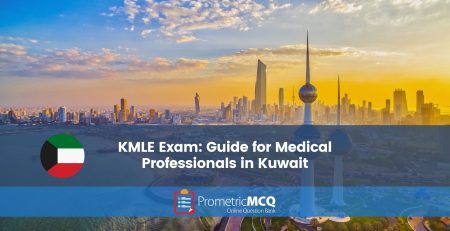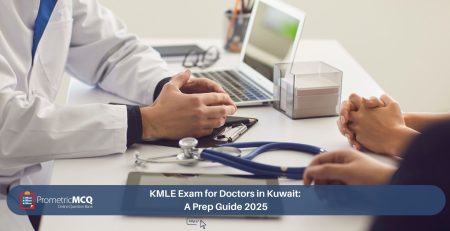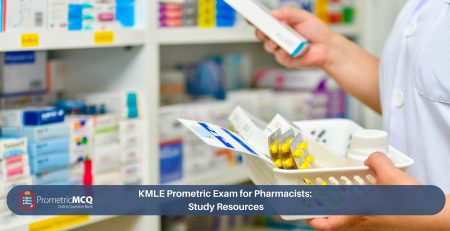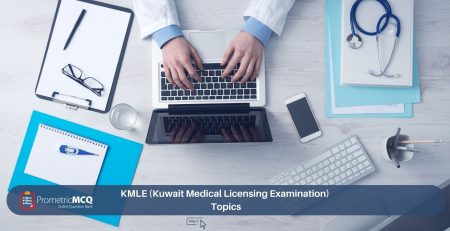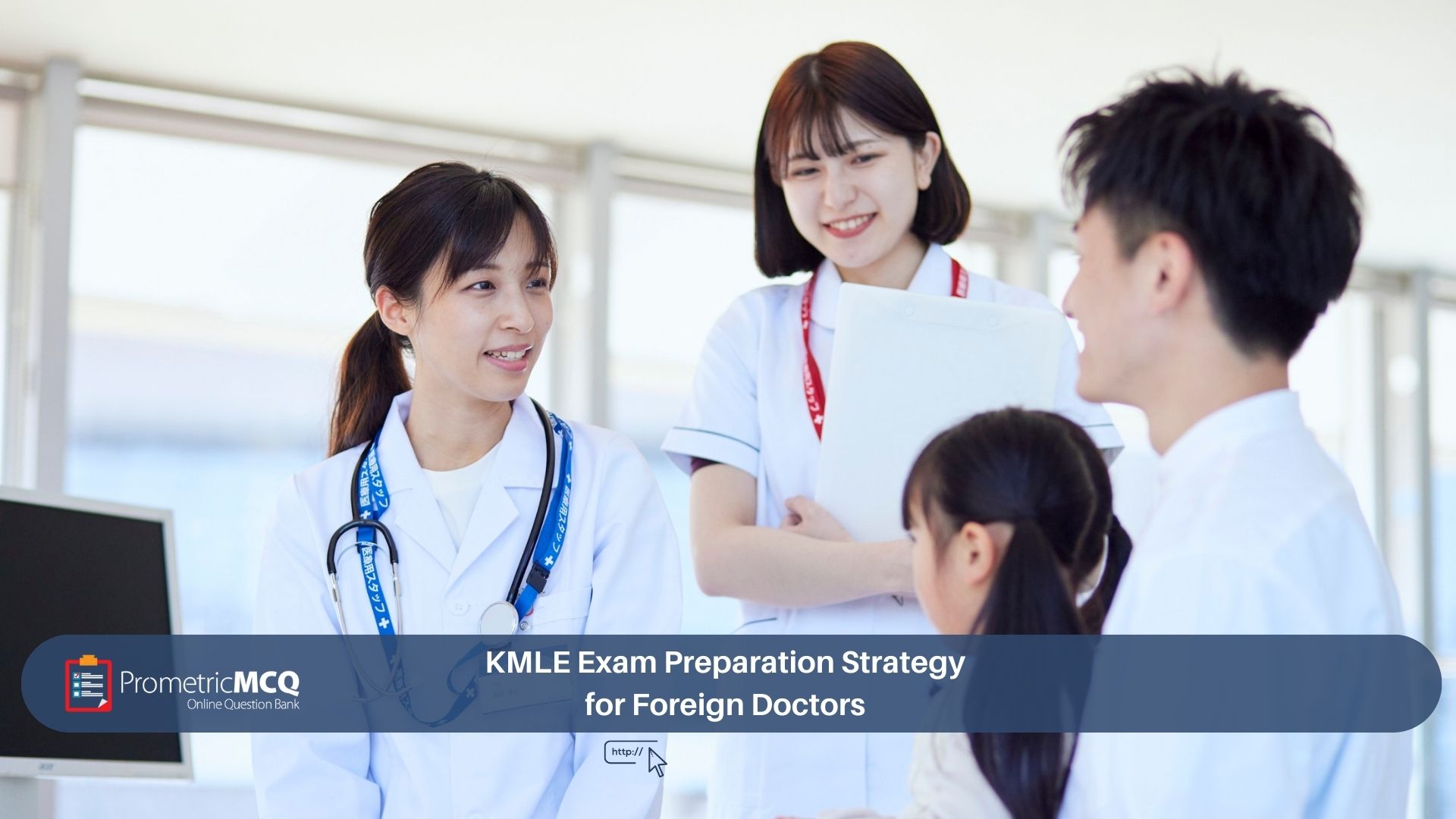
KMLE Exam Preparation Strategy for Foreign Doctors
fatima@prometricmcq.com2025-09-19T22:02:00+00:00Table of Contents
ToggleKMLE Exam Preparation Strategy for Foreign Doctors (2025)
For international medical graduates (IMGs), securing a license to practice in a new country is a monumental step, representing both a significant challenge and a tremendous opportunity. Kuwait, with its advanced healthcare infrastructure and commitment to excellence, is an increasingly attractive destination for physicians worldwide. The key that unlocks this professional door is the Kuwait Medical Licensing Examination (KMLE). However, for a foreign doctor, the KMLE is more than just a test of medical knowledge; it’s an assessment of your ability to adapt your clinical skills to meet international best-practice standards in a new and demanding environment.
Unlike the licensing exams you may have taken in your home country, the KMLE is designed with a singular focus on clinical reasoning and patient safety, evaluated through a fast-paced, case-based MCQ format. This requires a shift in preparation strategy—moving away from passive textbook reading towards an active, problem-solving approach. Success depends on a structured plan that addresses not only the vast medical syllabus but also the unique challenges faced by IMGs, from navigating administrative hurdles to mastering the nuances of the exam’s question style.
This ultimate 2025 guide provides a comprehensive, four-phase preparation strategy specifically tailored for foreign doctors. We will guide you from the initial administrative steps and resource selection to deep-diving into the high-yield syllabus, mastering MCQ deconstruction, and executing a flawless final-month plan. Complete with a robust 10-point FAQ addressing the specific concerns of IMGs, this guide is your definitive roadmap to conquering the KMLE and launching a successful medical career in Kuwait.
Key Takeaways for Foreign Doctors Taking the KMLE
- Start Administrative Processes Early: The DataFlow (PSV) process can be lengthy. Begin your document verification alongside your exam preparation to avoid delays.
- Adopt an MCQ-First Mindset: Your primary study tool must be a high-quality question bank (QBank). This is non-negotiable for success.
- Focus on International Guidelines: The exam is not based on your home country’s protocols. You must be fluent in the latest international, evidence-based guidelines (e.g., AHA, GINA, GOLD).
- Master High-Yield Topics: A disproportionate number of questions come from Internal Medicine. This must be the core of your study plan.
- Practice Under Timed Conditions: The pace of 150 questions in 180 minutes is demanding. Regular practice with timed mock exams is essential to build speed and endurance.
Phase 1: The Pre-Study Onboarding (First 2-4 Weeks)
Before you even open a textbook, you must get your administrative and strategic ducks in a row. This phase is about building the foundation for a stress-free and efficient study period.
1. Deconstruct the KMLE Exam Pattern
First, understand your adversary. The KMLE for General Practitioners is a Computer-Based Test (CBT) administered by Prometric.
- Format: 150 Multiple-Choice Questions (MCQs).
- Duration: 3 hours (180 minutes).
- Scoring: Pass/Fail result, with an estimated passing score of 60-65%. There is no negative marking.
- Content: Exclusively clinical, case-based scenarios.
This format means your ability to quickly analyze a clinical vignette is just as important as your underlying knowledge. For a broader overview, our KMLE guide for medical professionals provides essential context.
2. Initiate the Administrative Hurdles: DataFlow (PSV)
The Primary Source Verification (PSV) process, conducted by the DataFlow Group, is a mandatory verification of your medical degree, internship, experience certificates, and license to practice. This process can take several weeks or even months. It is highly recommended to start your DataFlow application *at the same time* you begin your exam preparation. Passing the exam is only one part of the equation; you cannot get a license without a positive PSV report.
3. Select Your Core Study Resources
For an IMG, choosing the right resources is critical. Your goal is to find tools that are aligned with international standards.
- Primary Tool (Mandatory): A high-quality, comprehensive Question Bank (QBank). This should be the centerpiece of your study. Look for a QBank with thousands of case-based questions, detailed explanations, and performance analytics. Resources like the General Practitioner MCQs bank are specifically designed for this purpose.
- Secondary Tool (Reference): One or two core international medical textbooks (e.g., Harrison’s Principles of Internal Medicine, Cecil Medicine). Do not read these cover-to-cover. Use them to look up concepts you don’t understand from the QBank explanations.
- Tertiary Tool (Guidelines): Bookmark websites for major international guidelines. The exam tests your knowledge of the most up-to-date, evidence-based medicine. A key external resource is the official guidelines repository from the Agency for Healthcare Research and Quality (AHRQ), which collects guidelines from various international bodies.
Phase 2: Building the Clinical Foundation (Weeks 3-12)
This is the longest and most intensive phase, where you will cover the entire syllabus through a question-based learning approach.
1. Create a Realistic and Disciplined Study Schedule
A typical IMG needs 3 to 5 months of dedicated study (3-5 hours per day). Divide the syllabus by systems and allocate time based on the high-yield distribution.
- Internal Medicine: 7-8 weeks
- Pediatrics: 2 weeks
- OB/GYN: 1-2 weeks
- Surgery, EM, and other specialties: 1 week
For each block, your process should be: Solve > Review > Read. First, do a block of 40-50 MCQs on a topic (e.g., Cardiology) in timed mode. Second, spend twice as long reviewing every single question, both right and wrong. Third, read up on the concepts you struggled with in your reference textbook.
2. Deep Dive into High-Yield KMLE Syllabus Domains
Focus your energy where it matters most. The KMLE for GPs is heavily weighted towards conditions commonly seen in primary care.
| Core Domain | Key Topics for Foreign Doctors to Master |
|---|---|
| Internal Medicine | This is your battleground. You must know the latest guidelines for: Hypertension (JNC 8 / ACC/AHA), Diabetes (ADA guidelines) including management with newer agents (SGLT-2i, GLP-1a), Acute Coronary Syndrome, Asthma (GINA guidelines), and COPD (GOLD guidelines). Be prepared for questions on interpreting ECGs, ABGs, and common lab results. |
| Pediatrics | Focus on the sick child. Master the diagnosis and management of common infections like acute otitis media, bronchiolitis, and croup. Know the developmental milestones and the standard vaccination schedule. |
| Obstetrics & Gynecology | From a GP’s perspective: know the routine screenings in antenatal care, how to manage common complaints of pregnancy, and how to recognize red-flag conditions like pre-eclampsia and ectopic pregnancy. |
| Emergency Medicine | Focus on the initial assessment and stabilization of critically ill patients. Understand the basics of the ABCDE approach in trauma, the sepsis bundle, and the immediate management of anaphylaxis. |
Phase 3: Sharpening Your MCQ Skills (Weeks 13-14)
With a solid knowledge base, you must now perfect your test-taking technique.
The Art of Deconstructing a KMLE Vignette
Every question is a puzzle. Here’s how to solve it:
- Read the Last Sentence First: Know what is being asked (Diagnosis? Next step? Drug mechanism?) before you read the case. This frames your thinking.
- Scan the Vitals and Labs: Look for any abnormal values. An unstable patient (e.g., hypotensive, tachycardic, hypoxic) changes your management priorities.
- Read the Stem and Highlight Keywords: Pick out the “buzzwords” (e.g., “tearing chest pain radiating to the back” for aortic dissection; “machine-like murmur” for PDA).
- Formulate a Differential Diagnosis: Before looking at the options, create a list of 2-3 likely diagnoses in your head.
- Attack the Options: Now, evaluate the options against your differential diagnosis. Use a process of elimination to rule out what is definitively wrong.
Phase 4: The Final Ascent and Simulation (Last 2 Weeks)
This phase is about building confidence and peak performance.
- Take Full-Length Mock Exams: You must take at least two full-length, 150-question mock exams under strict, timed conditions. This is crucial for perfecting your pacing and building the mental stamina needed for a 3-hour exam.
- Focused Review: In the last week, do not try to learn new information. Review your notes, focusing on easily forgotten details like specific diagnostic criteria, drug side effects, and pediatric milestones.
- Rest and Recharge: The day before the exam is for relaxation. Do not cram. Ensure you get 7-8 hours of quality sleep. Arrive at the Prometric center early to avoid any last-minute stress.
Frequently Asked Questions (FAQs) for Foreign Doctors
The KMLE is a clinical competency exam, similar in style to USMLE Step 3 or PLAB Part 2 (written). However, it is a generalist exam. Unlike the USMLE, which has separate basic science steps, the KMLE is 100% clinical. Compared to many national exams, it has a stronger emphasis on applying international guidelines rather than local protocols.
No, you do not need prior experience in Kuwait. Your eligibility is based on the requirements set by the Ministry of Health, which typically include your medical degree, a completed internship, and a valid license to practice in your home country. Post-graduate experience is often required as well.
No, the KMLE exam itself is conducted entirely in English. All clinical vignettes and questions are in English. While knowing Arabic is extremely beneficial for practicing medicine and communicating with patients in Kuwait, it is not a requirement for passing the licensure exam.
The timeline can vary significantly depending on how quickly your home institutions respond to verification requests. On average, it can take anywhere from 6 weeks to 4 months. This is why it is critical to start the process as early as possible.
The most common mistake is relying too heavily on passive learning (reading textbooks, watching videos) and not dedicating enough time to active learning through a high-quality QBank. You must solve thousands of questions to master the pattern and content.
No, absolutely not. The exam uses only generic (International Nonproprietary Names) for all medications. You must be familiar with generic names for all common drug classes.
The Ministry of Health typically allows a candidate a total of three attempts to pass the exam. A mandatory waiting period is usually required between attempts. It is imperative to use this time to change your study strategy and focus on your identified weak areas.
After passing, you will receive an eligibility letter. Your next steps are to ensure your DataFlow (PSV) report is positive and to secure a job offer from a licensed healthcare facility in Kuwait. Your employer will then use your exam result and PSV report to apply for your official license to practice.
Very up-to-date. The KMLE tests current, evidence-based medicine. You should be familiar with major guideline updates from the last 2-3 years, especially in high-impact areas like cardiology, diabetes, and infectious diseases.
It is essential to use a resource that understands the specific scope and style of the Gulf licensing exams. A platform that offers dedicated question banks for this region is your best bet. A great starting point is the KMLE Kuwait Prometric General Practitioner question bank.
Conclusion: Your Strategic Path to a Kuwait Medical Career
For the international medical graduate, passing the KMLE is a testament to both deep medical knowledge and strategic dedication. It is a challenging but highly achievable goal for those who approach it with a structured, intelligent plan. By focusing on a question-based learning strategy, mastering international clinical guidelines, and managing your time and administrative tasks effectively, you can confidently navigate this crucial step. Success on the KMLE is your official welcome into the vibrant and rewarding medical community of Kuwait.
Ready to Implement Your Strategy and Guarantee Success?
Our comprehensive QBank for the KMLE General Practitioner exam is filled with thousands of realistic clinical cases, detailed, guideline-based rationales, and simulated exams to ensure you are fully prepared for every aspect of the test.

